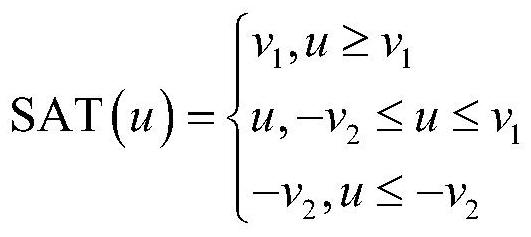Actuator saturation multi-agent system gain scheduling control method
A multi-agent system, gain scheduling control technology, applied in the direction of adaptive control, general control system, control/regulation system, etc., can solve problems such as reducing system performance, multi-agent systems cannot be consistent, and achieve faster convergence. effect of speed
- Summary
- Abstract
- Description
- Claims
- Application Information
AI Technical Summary
Problems solved by technology
Method used
Image
Examples
Embodiment Construction
[0058] Step 1. Establish the state space expression and communication topology diagram of the actuator saturated multi-agent system
[0059] A multi-agent system has N followers and a leader, where the state space expression of the leader is:
[0060]
[0061] The follower state space expression is:
[0062]
[0063] where i∈I[1,N] represents the i-th agent, x∈R n ,u∈R m They are the state vector and the input vector respectively, and n and m are positive integers. A∈R n×n is the system matrix with eigenvalues on the imaginary axis, B∈R n×m is the input matrix, and (A, B) is controllable, SAT represents the asymmetric saturation function, which has the following form
[0064] SAT(u)=[SAT(u 1 ) SAT(u 2 )…SAT(u m )] T
[0065] and
[0066]
[0067] where v 1 >0, v 2 >0 and v 1 ≠ v 2 .
[0068] Through mathematical transformation of the asymmetric saturation function, the asymmetric saturation system of the actuator can be changed into the following switc...
PUM
 Login to View More
Login to View More Abstract
Description
Claims
Application Information
 Login to View More
Login to View More - R&D
- Intellectual Property
- Life Sciences
- Materials
- Tech Scout
- Unparalleled Data Quality
- Higher Quality Content
- 60% Fewer Hallucinations
Browse by: Latest US Patents, China's latest patents, Technical Efficacy Thesaurus, Application Domain, Technology Topic, Popular Technical Reports.
© 2025 PatSnap. All rights reserved.Legal|Privacy policy|Modern Slavery Act Transparency Statement|Sitemap|About US| Contact US: help@patsnap.com



